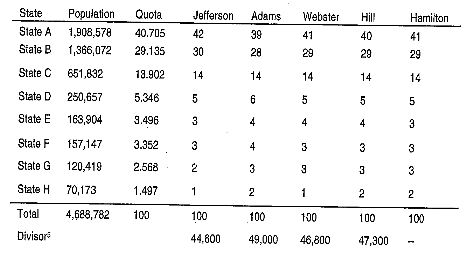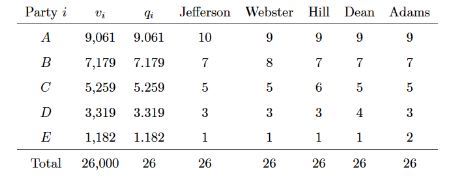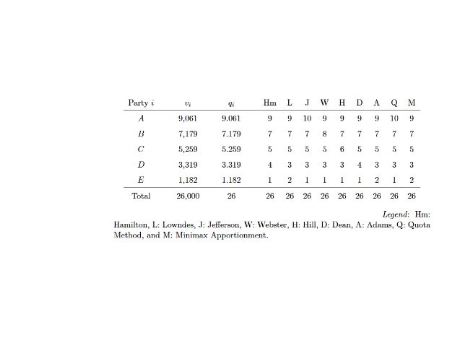Prepared by:
Joseph Malkevitch
Department of Mathematics
York College (CUNY)
Jamaica, New York 11451
email:
malkevitch@york.cuny.edu
web page:
http://york.cuny.edu/~malk

Table 1

Table 2

Table 3 (Same Data as Table 2 but more different methods indicated.
The L, in Table 3 refers to Lowndes Method, who proposed it in 1822, as a variation of Hamilton's Method. Lowndes was a member of the House of Representatives from South Carolina at the time.
Lowndes Method: If h is the house size determine the exact quota for each state using each states' population. Each state would be initially assigned the integer part of its exact quota. Now, instead of ordering the fractional parts in order of size (as in Hamilton's Method), one divides the exact quota by the integer part of this exact quota. The remaining seats are given away in the order of these numbers, which is typically not the same as the order of the fractional parts. (This method adjusts the fractional parts for the size of the states rather than just looking at the size of the parts themselves.)
These examples are due to Mark Beumer.
Reference:
Beumer, M., Masters Thesis, University of Amsterdam, 2010.